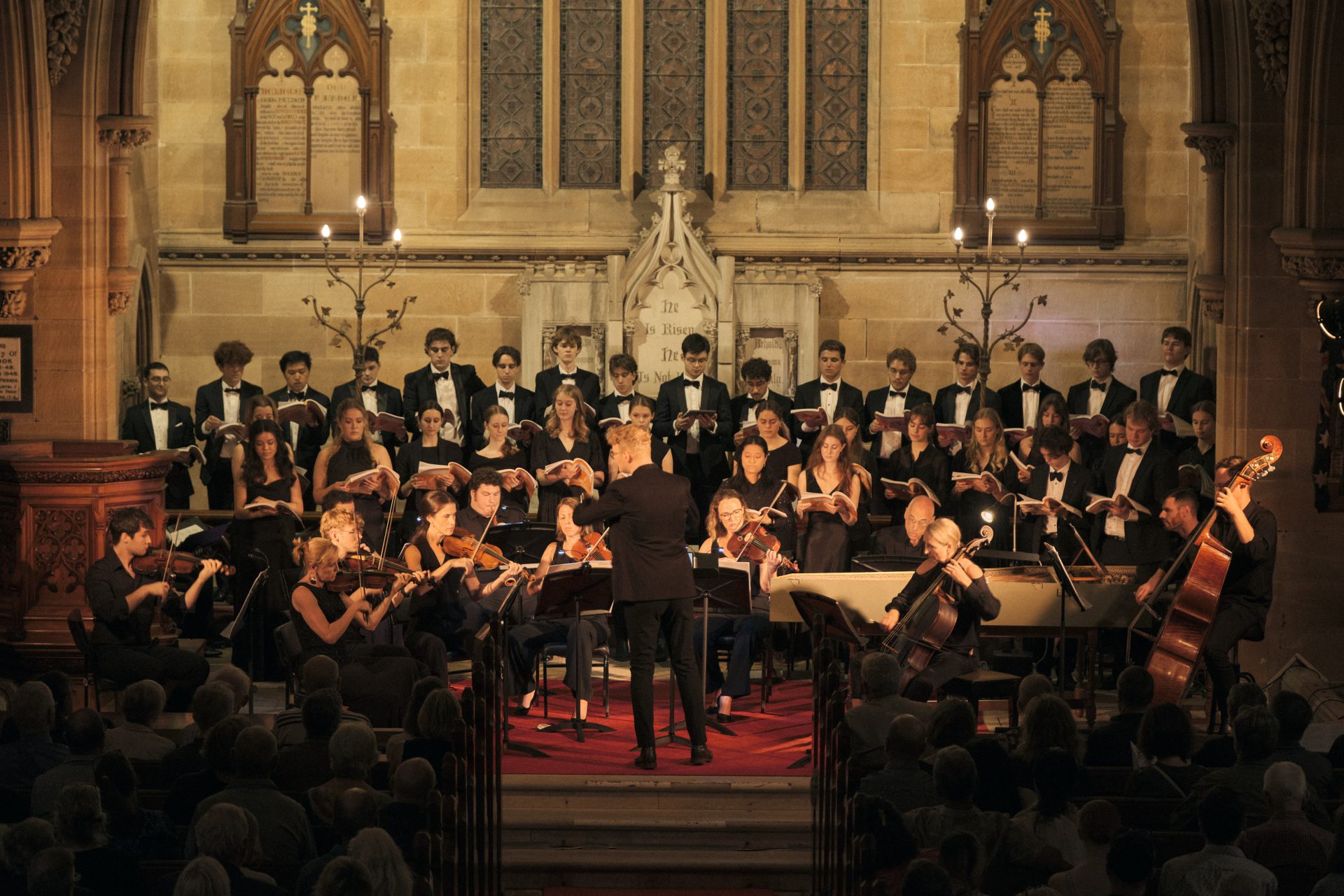Handel’s Messiah premiered in Dublin in 1742. Much like Handel’s other works, it was a crowd-pleaser.
A booming middle class in London broke the nobility’s monopoly on cultural patronage and thence came to be celebrated works that were stimulating and catchy, but elegantly simple. That is not to say that the Messiah was mere ephemera – a product of Georgian audiences’ notoriously fickle tastes. The oratorio still speaks, loudly, to people centuries on. It is usually three hours long, but it has a relentless dramatic momentum. All of this is testament to Handel’s keen sense of artistic economy. Importantly, and unlike most oratorios of its day, it puts the choir on equal footing with the soloists. This makes it the ideal oratorio with which to show off the Choir of St Paul’s College – a choir which is gradually becoming a very welcome centrepiece of Sydney’s early music scene.
But in the neat old tradition of having organ voluntaries presage devotional music, the concert began with a Bach organ piece, performed by St Paul’s College’s resident organ scholar Bailey Yeates with teacher David Drury standing alongside. The concert program prepares us for “Prelude & Fugue in G minor, BWV 578” but what was in fact performed was Bach’s more imposing Fantasia & Fugue in G minor, BWV 542. It was a mature performance, and the meandering fugue subject was executed well on the pedals – which is no mean feat.
The sinfonia to the Messiah, in the typical style of a French overture, was played at a rather slow tempo. It was not so much jarring as mournful or plaintive, perhaps to capture something of the sense of tragedy that follows. Jack Stephens has the orchestra meld almost immediately into the ‘Comfort ye’. Articulation is key here, lest the call to faith be mistaken for a divine injunction to ‘Come for tea’. Elias Wilson sings here with authority, and his dynamic control on the longer notes is impeccable. He appreciates that much of recitative is rhetorical tactics, and he shifts tone with great force halfway through as well as upon the awe-inspiring key-change that accompanies ‘Highway’. After an operatic introduction on the strings emerges David Greco, whose studied voice is well-suited to the melismas in “Thus saith the Lord” (which speaks much of ‘shaking’ the heavens and earth). In another show of operatic excess, Handel interposes a series of shimmering tremolos on strings in the middle of an impassioned plea: “Who shall stand when He appeareth?” Interestingly, that aria is assigned to the bass in this performance.
The choir then makes itself known in the delightful fugue “And he shall purify”. As with the other choral fugue (“For unto us a child is born”), there is not much stretto and there is a conspicuous lack of artistic decadence, but the choir still distinguished itself in maintaining the independence of each section. The declamatory tutti section “that they may offer” was a moment to behold.
Michael Burden emerges in the next aria with a thin and delicate countertenor voice and with admirable projection. The following aria is a quick change of scene, as the violins play almost ponticello and Greco’s voice booms to declare that “darkness shall cover the earth”; the only respite is a step-wise ascension in the next verse. The accompanying air was played at an unusually quick tempo, and not quite larghetto, but it gave a fittingly menacing effect. Greco threw in a few tricks for good measure, including a few protracted trills, to convey anguish.
Much like Bach’s Christmas Oratorio, there is a pastorale (styled ‘Pifa’) that uses rustic themes (in Bach’s case it was the employment of the oboe da caccia) to evoke the setting of Christ’s birth. This set the scene for Arianna Ricci, who distinguished herself in the recitative that followed with a voice that was at once crystalline and understated. She did well in the bird-like ‘Rejoice greatly’ aria, which is laden with florid ornamentation. She ascended into the highest parts of her range to execute a stunning cadence. The same should be said of Brianna Morrison’s mature and precise voice, as she ascends spectacularly to a high B-flat.
Elias Wilson opens the narrative again after the interval, which is quite fitting because his is a voice that commands attention. The dramatic potential of his voice is on full display in the ‘Thou shalt break them’ aria, which centres on a theme replete with musical potential (think of the delicious contrast between ‘deposuit potentes’ and ‘et exaltavit humiles’ in the Magnificat).
Molly Ryan made her debut in the ‘How beautiful are the feet’ aria, with projection that filled the vastness of St Thomas’ Anglican Church, North Sydney. The assuredness in her voice served well in her rendition of the ‘I know that my Redeemer liveth’ aria. In stark contrast, the chorus then sings, sotto voce, without instrumentation, and in a paced style reminiscent of Purcell’s funeral pieces, ‘Since by man came death, by man came also the resurrection of the dead’. But all melancholy is dissipated by the bursts of the trumpet by Alex Bieri which accompanies a triumphant aria that was much like ‘Let the bright Seraphim’. The typical Easter theme of triumph over death is declaimed in the closing recitative – “Death is swallowed up in victory”. It is as though the striking image of Tintoretto’s Cristo risorgente was set to music.
If this is anything to go by, the Choir of St Paul’s College is in good stead for their whirlwind tour this year as the resident choir of Westminster Abbey and St Paul’s Cathedral London, among other august places.
